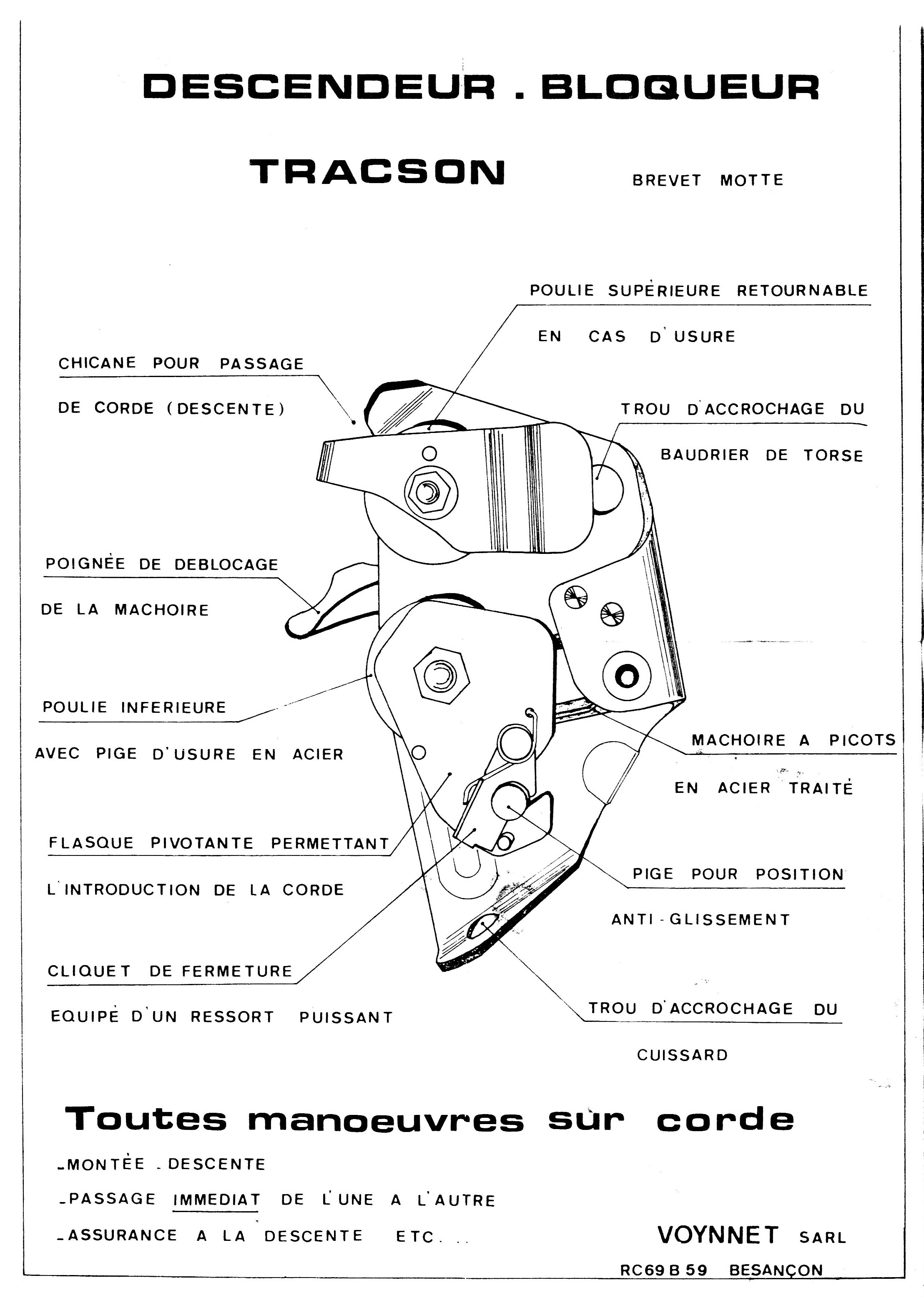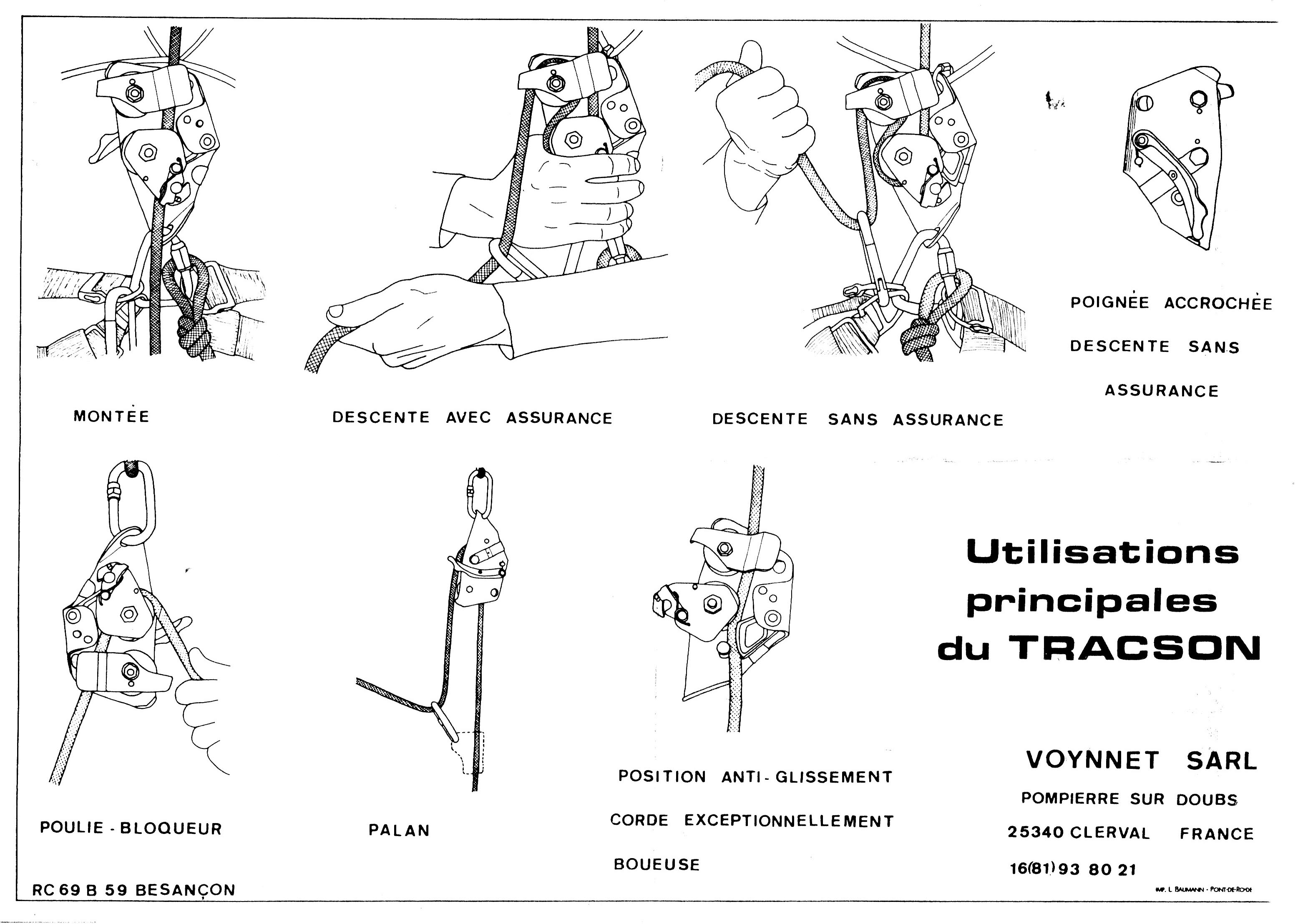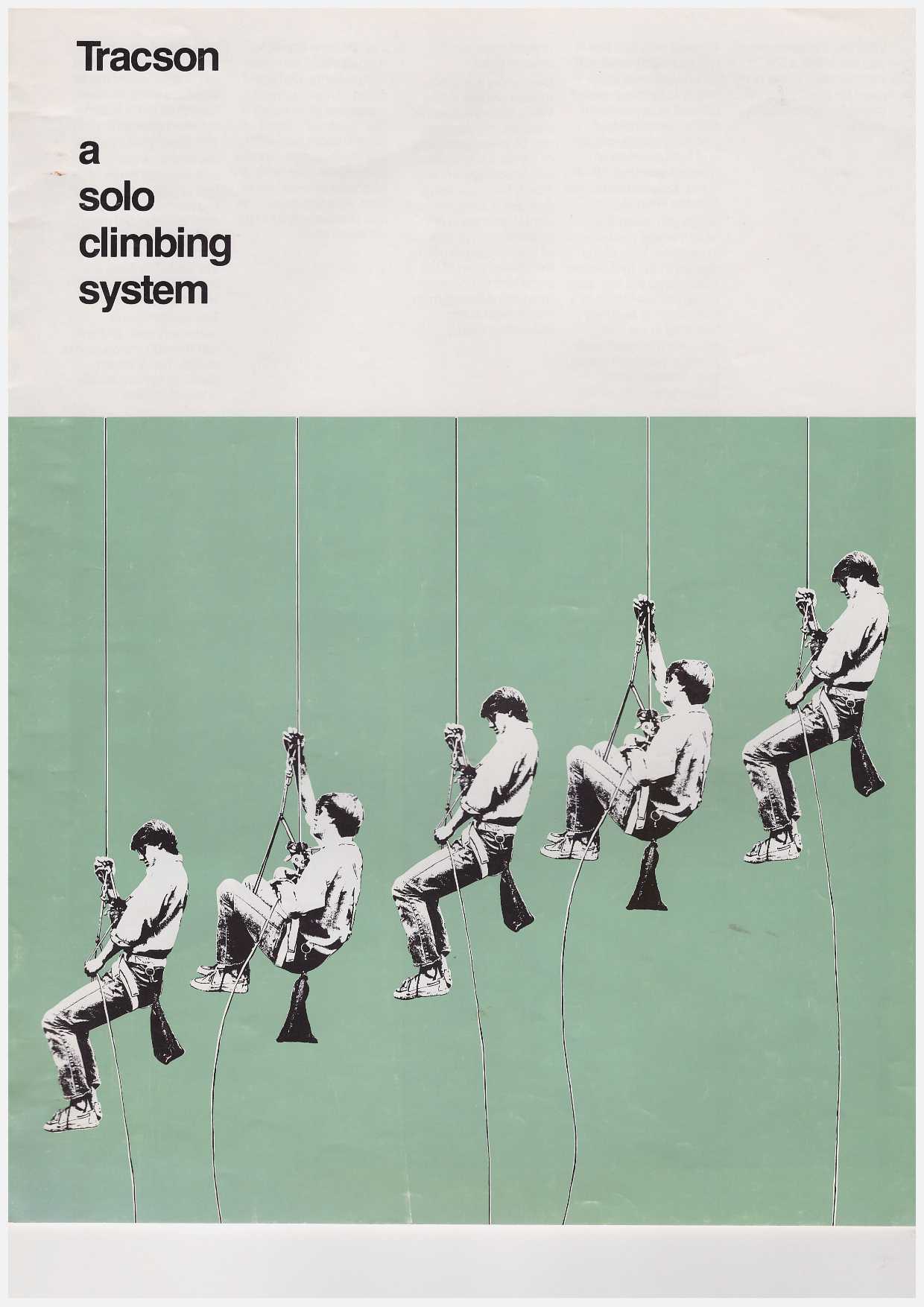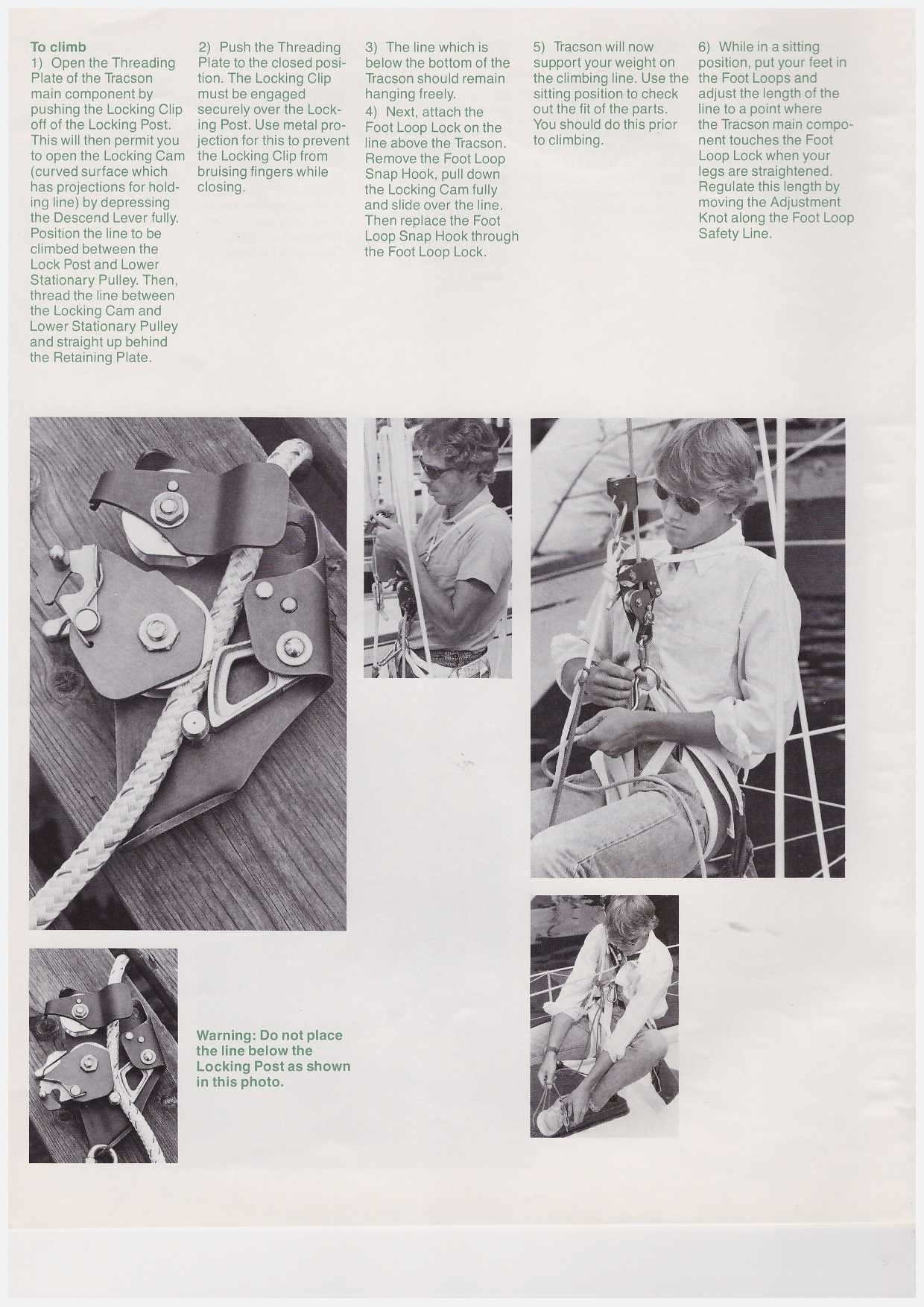Overview
[ Top
| Version B
| Return to Bobbins
]
Version A
(#452)
Technical Details
I acquired this descender from Repetto Sport in Genova, Italy
in 1982.
The Tracson incorporates features of both an eccentric cam
ascender and a bobbin. The device consists of a number of parts
mounted on a roughly trapezoidal 3.9 mm. thick red anodized
aluminum back plate. A 15 mm. hole is drilled in the lower
left corner of the back plate, then the corner is bent inwards
at a 90° angle. This hole is the main attachment point. The
upper left corner is also bent in slightly to serve as a rope
guide for the upper bollard. A second 15 mm. attachment hole
is cut in the upper right, then the right side of the plate is
bent around 180° to form a channel for mounting a cam.
The upper bollard and an irregular shaped rope guide is attached
near the upper left corner of the back plate with a 8 mm.
bolt, nut, and washer. A 5 mm. steel pin through the back plate
keeps the bollard from rotating and a second pin keeps the rope
guide from turning.
Below this is the lower bollard assembly. A 9.5 mm. bolt
and shoulder nut secure the bollard and a pivoting cover plate
assembly, as well as a flat steel spring in the outside of the
back plate A 5 mm. steel pin through the back plate keeps
the bollard from rotating. The cover plate is an irregular hexagonal
3 mm. aluminum plate which keeps the rope from slipping off
the lower bollard. It has a spring loaded latch which engages
a post riveted to the back plate below the lower bollard. Also
present on the cover plate are an 8 mm. pin provided as a
finger grip and a very small pin with no obvious function.
The cam assembly consists of a steel cam, cam spring, and cam
pivot. The cam is very similar to a Jumar cam, with a (3)(4.3)6
conical tooth pattern. The tooth axes are perpendicular to the
cam face. Above the cam is the cam actuator, a two piece cog pinned
to its own pivot. On the outside of the back plate a lever is pinned
to this pivot, so it actuates the cog. A spring keeps the lever
in the raised position, where it does not interact with the cam.
A third pin through the back plate channel prevents cog over-rotation.
The lever can be rotated downwards, thus opening the cam. An Allen
setscrew in the lever handle can engage a hole in the flat spring,
thus locking the cam open. A piece of foam is placed between the
flat spring and the back plate, but its function is not immediately
apparent. The cam itself acts against the rope, with the lower
bollard acting as the anvil. The lower bollard has a flat area
machined into the rope travel surface to improve its performance
in this function.
The Tracson bears no markings other than a sticker giving the
name of the device and some information on the manufacturer.
Denis Motte invented the Tracon and applied for a patent in April 1978. He received French Patent #2,422,587 the following year.
This device is an attempt to make an ascender and descender
out of one piece of equipment, and the result is needlessly complicated.
I count no less than 37 parts to this device, and I may have missed
a few. The idea of a combination ascender-descender is appealing,
but since the functional requirements for the two types of device
are so different, attempts to devise a combined apparatus have
been mostly unsuccessful. The Tracson is designed to be used as
a bobbin and as a chest ascender in the Frog system. It fails
to achieve an advantage over, say, a Petzl
Stop bobbin and a Petzl Croll ascender used in the same manner.
When I first tested the device, I found that the rappel characteristics
were much like other bobbins. Fearing rope damage from the sudden
closure of the toothed cam, I stopped before engaging the autostop
feature. When I tried to disengage the cam under load by using
the lever, the lever pivot bent and the lever would no longer
engage the hole in the flat spring. The applied force did not
seem excessive, but damage resulted anyhow. I managed to repair
the device, then I tried using it as an ascender and the cam pivot
bent again. At the 1989 N.S.S. Convention, Alex Sproul told me
that when he tried his Tracson, he experienced the same failures
I did with mine. Either we both have lemons or the material in
the cam pivot is inadequate. I no longer use the Tracson for fear
of destroying my collection’s copy.
Although I find this device fascinating, I cannot recommend
it for caving use.
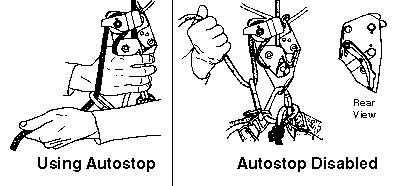
[ Top
| Version B
| Return to Bobbins
]
Version B
(#2409)
Technical Details
I acquired my S.A.R.L. Voynett Tracson, Version B in 2017 as part of Bob Thrun’s collection.
My S.A.R.L. Voynett Tracson, Version B is 192 mm. tall, 107 mm. wide, 50 mm. thick, and weighs 589 g.
The pivoting cover plate on this version is anodized.
The Version B handle casting has some small differences where it connects to the cam actuator. The end of the actuator now has two flats, and the handle casting hole is pressed onto the actuator. The pin connection has been eliminated.
The Tracson bears no markings other than a sticker giving the
name of the device and some information on the manufacturer.
Because of the problems that I had with Version A and Alex Sproul had with his, I decided not to test the new design to see if the changes to the cam actuator and handle work any better than they did for Version A.
The Tracson was originally intended for climbing the masts of sailboats.
[ Top
| Version A
| Version B
]




